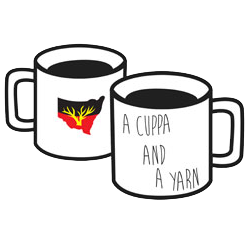
7 July, 2021
NAIDOC Week – 7 July 2021
It’s one of the most famous mountains in Australia.
Wahluu Mount Panorama is known to racing enthusiasts as an iconic racetrack, but for the Wiradjuri people of the region, its significance goes back many tens of thousands of years.
Wahluu means “young man’s initiation place”, is part of the Wiradjuri creation story and connects with Mount Canobolas in Orange and Mount Macquarie in Carcoar.
The mountain was dual-named in 2015, following the Bathurst Local Aboriginal Land Council’s (LALC) proposal to the Geographical Names Board (GNB) and the LALC’s leadership in a long-running community campaign.
The dual naming system applies to already named geographical features including rivers, creeks, waterfalls, mountains, and caves that are of cultural significance to Aboriginal communities.
The Bathurst LALC CEO Tonilee Scott says that dual-naming landscapes connects broader communities with the Aboriginal culture and heritage of the areas they live in.
“Dual naming is a powerful way of healing country, by connecting everyone in the community to a landscape’s original name. Then we welcome the community to call it by its original name as our people have, for 60-thousand years.”
So powerful is the community healing around calling a landscape or waterway by its original name, that the Bathurst LALC is now pursuing dual naming the length of the Fish River and Macquarie River to its traditional Wiradjuri name, Wambuul.
Wambuul means “winding river”. It rises in the central highlands near the town of Oberon and travels generally northwest through Wiradjuri country past Bathurst, Wellington, Dubbo, Narromine, Warren, Coonamble and Walgett where it joins the Barwon River at Brewarrina.
Bathurst LALC’s new application to the GNB is supported by the Bathurst Regional Council, NSW Aboriginal Land Council, Gunhigal Mayiny Wiradyuri Dyilang Enterprise, and the Orange, Trangie, Warren and Wellington Local Aboriginal Land Councils.
Toni-Lee Scott says calling the river Wambuul is a powerful and inclusive way to preserve traditions and reawaken language.
“When we use our original languages to refer to our landscapes and waterways, we connect with our own community and our rich traditions and history. It helps give us a sense of belonging and identity.
We are the original custodians of this country, and we want to share the original names of all our special places and waters. Let’s call country by its original name and protect our culture,” she said.
The Geographical Names Board is now consulting with community on the proposal, and you can comment at its website here https://proposals.gnb.nsw.gov.au/currentproposals under “Proposals Open for Public Comment”.
You can also send written submissions to the Secretary, Geographical Names Board, 346 Panorama Avenue, Bathurst, NSW 2795. The closing date for submissions is 18 July 2021.
Image: Wambuul at Bathurst. Credit: Ian Sutton.
And enjoy this slow aerial pass over Wambuul, courtesy of Sky Eye, UAV Solutions.

